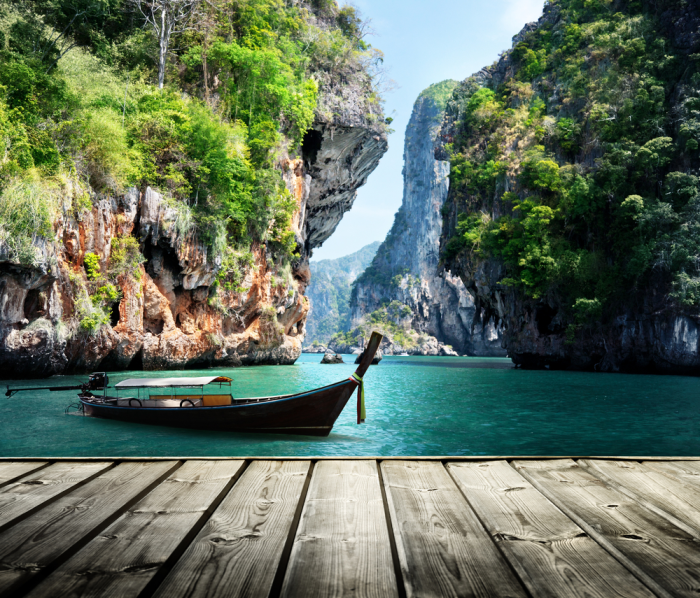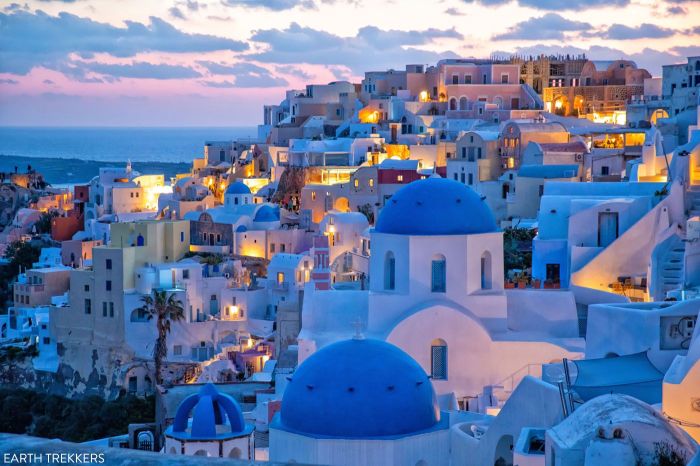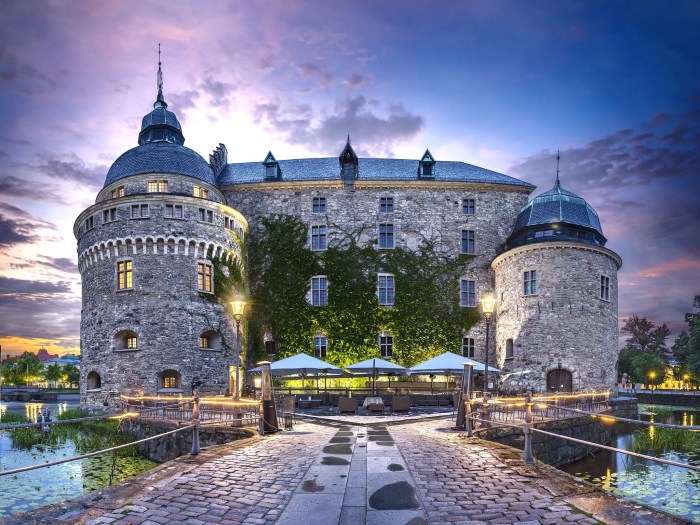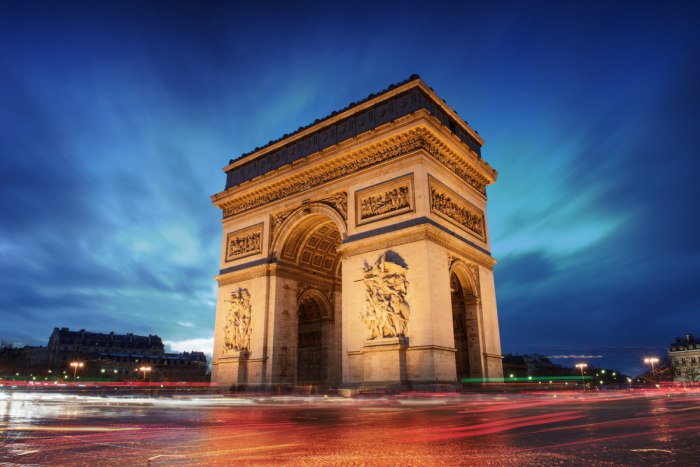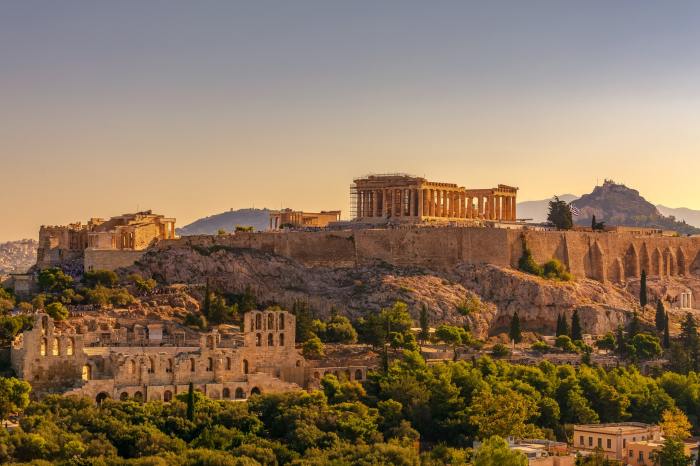Top 10 Places To Visit In The Alps
Top 10 Places To Visit In The Alps: Imagine breathtaking mountain peaks, charming villages, and adventure around every corner. The Alps, a majestic mountain range spanning several European countries, offer an incredible blend of natural beauty, cultural richness, and thrilling activities.
Whether you’re a seasoned hiker, a ski enthusiast, or simply seeking a picturesque getaway, the Alps have something for everyone.
From the iconic Swiss Alps to the picturesque Austrian and Italian peaks, this guide will take you on a journey through the most captivating destinations in the region. We’ll explore the best places to visit, the unique cultural experiences to immerse yourself in, and the diverse activities that will leave you breathless.
So, pack your bags, grab your hiking boots, and get ready to discover the magic of the Alps.
Introduction
The Alps, a majestic mountain range stretching across eight European countries, are a true wonder of nature. This iconic landscape, with its snow-capped peaks, verdant valleys, and glistening glaciers, has captivated travelers and adventurers for centuries. Beyond its natural beauty, the Alps are also a melting pot of cultures, languages, and traditions, each region offering a unique glimpse into the history and heritage of this extraordinary region.
From exhilarating hikes and challenging ski runs to charming villages steeped in history and delectable culinary experiences, the Alps cater to every traveler’s desire. Whether you seek adventure, relaxation, or cultural immersion, this breathtaking region promises an unforgettable journey.
Diverse Experiences in the Alps
The Alps offer a wide array of experiences, catering to various interests and preferences.
- Hiking and Trekking: The Alps are a hiker’s paradise, with countless trails winding through picturesque landscapes. From gentle walks to challenging treks, there’s a trail for every skill level.
- Skiing and Snowboarding: In winter, the Alps transform into a winter wonderland, attracting skiers and snowboarders from around the globe. The region boasts world-class resorts with challenging slopes and breathtaking views.
- Cultural Exploration: The Alps are home to a rich tapestry of cultures, with each region boasting its unique traditions, languages, and architecture. Explore historic villages, visit charming museums, and immerse yourself in the local way of life.
- Culinary Delights: The Alps are renowned for their hearty and flavorful cuisine, featuring fresh local ingredients and traditional recipes. Indulge in cheese fondue, savor regional specialties like Raclette, and enjoy a glass of local wine while soaking in the alpine atmosphere.
Top 10 Places to Visit in the Alps
The Alps, a majestic mountain range spanning across eight European countries, offers breathtaking scenery, exhilarating activities, and rich cultural experiences. From towering peaks to charming villages, the Alps beckon adventurers, nature lovers, and culture enthusiasts alike.
Top 10 Places to Visit
Here are ten must-visit destinations in the Alps, each offering unique attractions and activities for every traveler.
| Rank | Location | Description | Activities |
|---|---|---|---|
| 1 | Zermatt, Switzerland | Nestled at the foot of the Matterhorn, Zermatt is a car-free village renowned for its stunning alpine scenery and world-class skiing. | Hiking, skiing, snowboarding, ice skating, mountain biking, exploring the Gornergrat, visiting the Matterhorn Museum. |
| 2 | Interlaken, Switzerland | Situated between two beautiful lakes, Interlaken offers a picturesque backdrop for adventure and relaxation. | Hiking, paragliding, white-water rafting, visiting the Harder Kulm, exploring the Jungfraujoch, taking a boat tour on Lake Thun or Lake Brienz. |
| 3 | Chamonix, France | Known as the “Capital of Mountaineering,” Chamonix is a popular destination for outdoor enthusiasts seeking challenging climbs and stunning views. | Hiking, climbing, skiing, snowboarding, visiting the Aiguille du Midi, taking the Montenvers Railway to the Mer de Glace glacier. |
| 4 | Innsbruck, Austria | Innsbruck, the capital of Tyrol, boasts a rich history, stunning architecture, and a vibrant cultural scene. | Visiting the Imperial Palace, exploring the Old Town, skiing at the Nordkette ski area, attending a concert or performance at the Tyrolean State Theatre. |
| 5 | Cortina d’Ampezzo, Italy | Cortina d’Ampezzo, a charming town in the Dolomites, is renowned for its stunning natural beauty and world-class skiing. | Hiking, skiing, snowboarding, exploring the Tre Cime di Lavaredo, visiting the Cortina Winter Olympics Museum. |
| 6 | Garmisch-Partenkirchen, Germany | A popular resort town in the Bavarian Alps, Garmisch-Partenkirchen offers a mix of traditional charm and modern amenities. | Hiking, skiing, snowboarding, visiting the Neuschwanstein Castle, exploring the Zugspitze, attending the annual Oktoberfest. |
| 7 | Lake Bled, Slovenia | Lake Bled is a picturesque lake surrounded by lush forests and towering mountains, featuring a charming island with a church. | Boating, swimming, hiking, visiting Bled Castle, exploring the Vintgar Gorge. |
| 8 | Hallstatt, Austria | Hallstatt, a UNESCO World Heritage Site, is a charming village on the shores of a picturesque lake, surrounded by towering mountains. | Visiting the Hallstatt Salt Mine, exploring the Old Town, taking a boat trip on the lake, hiking in the surrounding mountains. |
| 9 | Grindelwald, Switzerland | Grindelwald is a charming village nestled in the heart of the Bernese Oberland, offering stunning views of the Eiger, Mönch, and Jungfrau peaks. | Hiking, skiing, snowboarding, visiting the First Cliff Walk, taking the Jungfraujoch railway to the top of Europe. |
| 10 | Annecy, France | Annecy, a charming town on the shores of a beautiful lake, is known for its picturesque canals, vibrant markets, and historic architecture. | Cycling, boating, visiting the Annecy Castle, exploring the Old Town, taking a walk along the canals. |
Switzerland
Switzerland is a landlocked country in Central Europe, known for its breathtaking mountain scenery, charming villages, and high standard of living. The Swiss Alps are a major draw for tourists, offering stunning views, challenging hikes, and exciting winter sports.
Popular Destinations
Switzerland’s iconic Swiss Alps are home to numerous popular destinations, each offering unique experiences.
- Zermatt: A car-free village nestled at the foot of the Matterhorn, Zermatt offers stunning views of the iconic peak. It’s a popular destination for hiking, skiing, and snowboarding, with a wide range of trails and slopes for all levels.
The village itself is charming, with traditional wooden chalets and a lively atmosphere.
- Interlaken: Situated between two beautiful lakes, Thun and Brienz, Interlaken is a popular base for exploring the Bernese Oberland region. The town offers a variety of activities, including paragliding, white-water rafting, and mountain biking. It’s also a great place to relax and enjoy the stunning natural scenery.
- Lucerne: Located on the shores of Lake Lucerne, Lucerne is a charming city with a rich history and culture. The city is known for its picturesque old town, with its charming bridges, historic buildings, and vibrant atmosphere. Lucerne also offers excellent opportunities for exploring the surrounding countryside, with scenic hiking trails and boat trips on the lake.
Cultural Experiences
Switzerland offers a unique cultural experience, blending tradition with modernity.
- Traditional Villages: Switzerland is dotted with charming traditional villages, each with its own unique character and history. These villages often feature picturesque wooden chalets, cobblestone streets, and traditional customs. Visitors can experience the authentic Swiss way of life by exploring these villages, attending local festivals, and sampling local cuisine.
- Cheesemaking: Switzerland is famous for its cheese, particularly Emmental and Gruyère. Visitors can learn about the traditional cheesemaking process at local farms and cheese factories. Many farms offer tours and tastings, allowing visitors to sample different varieties of cheese and learn about their history and production.
- Chocolate Tasting: Switzerland is also renowned for its chocolate. The country’s chocolatiers produce some of the finest chocolate in the world, with a wide range of flavors and styles. Visitors can indulge in chocolate tasting sessions at local chocolatiers, learn about the history of Swiss chocolate, and discover new favorites.
Thrilling Activities
The Swiss Alps offer a range of thrilling activities for adventure seekers.
- Paragliding: Paragliding is a popular activity in Switzerland, offering stunning views of the mountains and valleys. Tandem flights are available for beginners, allowing them to experience the thrill of flying without prior experience. Experienced paragliders can enjoy challenging flights and explore the Alps from a unique perspective.
- White-Water Rafting: Switzerland’s rivers offer exciting white-water rafting experiences. Rafting trips are available for all levels, from gentle family-friendly excursions to challenging rapids for experienced rafters. This activity allows visitors to enjoy the beauty of the Swiss Alps from a different perspective.
- Mountain Biking: Switzerland’s extensive network of mountain biking trails offers a variety of experiences for all levels. From gentle trails for beginners to challenging descents for experienced riders, mountain biking in Switzerland allows visitors to explore the Alps at their own pace and enjoy the fresh air and stunning scenery.
Austria

Austria is a landlocked country in Central Europe known for its breathtaking alpine scenery, rich history, and vibrant culture. The Austrian Alps, a majestic mountain range that dominates the country’s landscape, offers a myriad of opportunities for adventure and relaxation.
Austrian Culture
Austria is renowned for its cultural richness, a tapestry woven from music, architecture, and culinary traditions. The country’s musical heritage is deeply rooted in classical music, with iconic composers like Mozart, Beethoven, and Strauss leaving an indelible mark on the world.
Vienna, Austria’s capital, is considered the birthplace of classical music and boasts world-renowned concert halls like the Vienna State Opera and the Musikverein. Austrian architecture is a testament to the country’s rich history, showcasing a blend of styles from Romanesque and Gothic to Baroque and Art Nouveau.
The Schönbrunn Palace, a UNESCO World Heritage Site, is a prime example of Baroque architecture, while the Hofburg Palace, the former imperial residence, reflects the grandeur of the Habsburg dynasty. Austrian cuisine is a delightful fusion of flavors, reflecting the country’s diverse geographical influences.
Traditional dishes like Wiener Schnitzel, a thin, breaded, and pan-fried veal cutlet, and Sachertorte, a decadent chocolate cake, are culinary delights that capture the essence of Austrian gastronomy.
Italy
The Italian Alps offer a captivating blend of stunning natural beauty, rich history, and vibrant culture. From the snow-capped peaks of the Dolomites to the serene shores of Lake Garda, this region is a paradise for outdoor enthusiasts, history buffs, and foodies alike.
Exploring the Italian Alps
The Italian Alps are home to a diverse range of landscapes, from towering mountains and deep valleys to sparkling lakes and charming villages. Here are some of the most popular destinations:
Cortina d’Ampezzo
Nestled in the heart of the Dolomites, Cortina d’Ampezzo is a world-renowned ski resort known for its elegant atmosphere and breathtaking scenery. Its charming streets are lined with boutiques, restaurants, and cafes, while the surrounding mountains offer endless opportunities for skiing, snowboarding, hiking, and mountain biking.
The Alps are totally epic, with tons of amazing places to check out. From the majestic Matterhorn to the charming villages of Switzerland, you’ll be blown away by the beauty of this mountain range. But if you’re looking for a wider European adventure, be sure to check out our Top 10 Places To Visit In Europe list.
Then, get back to conquering the Alps, where you can go skiing, hiking, or just soak in the scenery. It’s a trip you won’t forget!
Dolomites
The Dolomites, a UNESCO World Heritage Site, are a mountain range characterized by their unique, jagged peaks and dramatic rock formations. The area is popular for hiking, climbing, and skiing, with numerous trails and routes for all levels of experience.
Lake Garda
Lake Garda, the largest lake in Italy, is a popular destination for water sports, cycling, and relaxation. The lake’s shores are dotted with charming towns and villages, each with its own unique character and history.
The Rich History and Culture of the Italian Alps
The Italian Alps have been inhabited for centuries, leaving behind a rich tapestry of history and culture. From ancient Roman ruins to medieval castles, the region is a treasure trove of historical sites and architectural wonders.
Ancient Roman Ruins
The Romans played a significant role in the development of the Italian Alps, leaving behind numerous ruins and archaeological sites. One notable example is the Roman city of Aosta, founded in 25 BC and known for its well-preserved Roman amphitheater, city walls, and Roman arch.
Medieval Castles
The Italian Alps are home to numerous medieval castles, many of which are perched atop towering peaks or nestled in picturesque valleys. These castles offer a glimpse into the region’s rich history and provide stunning views of the surrounding landscape.
Artistic Heritage
The Italian Alps have inspired artists for centuries, and the region is home to numerous museums, galleries, and churches showcasing the artistic heritage of the area. Notable examples include the Museo di Arte Moderna e Contemporanea di Trento e Rovereto (MART), which houses a collection of modern and contemporary art, and the Duomo di Trento, a magnificent cathedral adorned with frescoes and sculptures.
The Culinary Delights of the Italian Alps
The Italian Alps are known for their delicious cuisine, which combines traditional Italian flavors with regional specialties.
Local Specialties
The region is famous for its cheeses, including Fontina, Asiago, and Casera. Other local specialties include polenta, a cornmeal porridge, and gnocchi, small dumplings made from potatoes or flour.
The Alps are seriously stunning, with epic views and tons of cool activities. From hiking to skiing, there’s something for everyone. But if you’re looking for a totally different kind of adventure, check out the Top 10 Places In The Southwest USA – it’s like a whole other world with deserts, canyons, and some seriously rad national parks.
You’ll definitely want to add both the Alps and the Southwest to your travel bucket list!
Regional Wines
The Italian Alps are home to several renowned wine regions, including Valtellina, Trentino, and Alto Adige. These regions produce a variety of wines, including red, white, and sparkling wines.
France
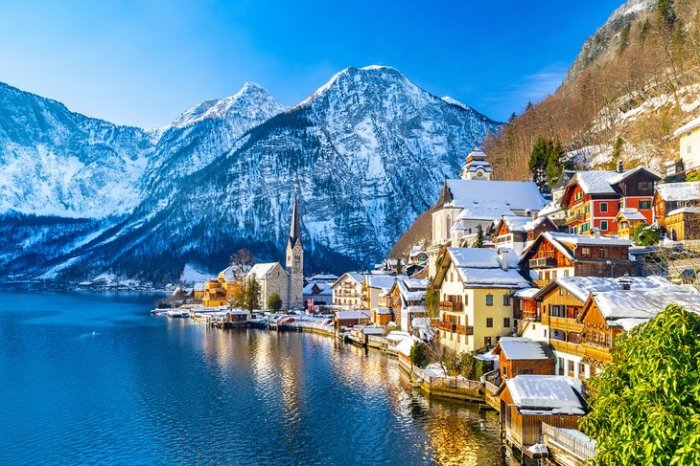
The French Alps offer a captivating blend of breathtaking scenery, rich cultural heritage, and exhilarating outdoor adventures. From iconic peaks to charming villages, the region beckons travelers seeking a unique and unforgettable experience.
The French Alps’ Cultural Offerings
The French Alps are renowned for their vibrant cultural tapestry, which has been shaped by centuries of tradition and artistic expression.
Art and Architecture
The region is home to a wealth of artistic treasures, including stunning churches, historic castles, and captivating museums. The Church of Saint-Michel in Chamonix, for instance, boasts a magnificent Gothic architecture, while the Palace of Versailles, located just outside Paris, is a testament to the grandeur of French Baroque style.
Culinary Traditions
French cuisine is a celebrated art form, and the French Alps are no exception. The region’s culinary heritage is characterized by its use of fresh, local ingredients, such as cheeses, meats, and vegetables.
Germany
The German Alps, a breathtaking region in the south of the country, offer a unique blend of natural beauty, cultural heritage, and outdoor adventure. From towering peaks to charming villages, the German Alps have something for everyone.
Cultural Heritage
The German Alps are steeped in rich cultural traditions, with folklore, architecture, and festivals that have been passed down through generations. One of the most prominent aspects of this cultural heritage is the region’s distinctive architecture, which features traditional wooden houses with brightly painted facades, often adorned with intricate carvings.
These structures are a testament to the skill and craftsmanship of the local artisans, who have been building and preserving these unique homes for centuries. The region is also known for its vibrant folklore, which is reflected in its numerous traditional festivals and celebrations.
These events often feature traditional music, dance, and costumes, providing visitors with a glimpse into the rich cultural tapestry of the German Alps.
Natural Landscapes
The German Alps boast a diverse range of natural landscapes, from rugged mountain ranges to serene lakes and lush forests. The region’s iconic peaks, including the Zugspitze, Germany’s highest mountain, offer stunning panoramic views and challenging hiking trails. The scenic lakes, such as Lake Starnberg and Lake Tegernsee, are perfect for swimming, boating, and simply relaxing amidst nature’s beauty.
The Bavarian Alps, with their rolling hills and dense forests, offer a more gentle experience, ideal for leisurely walks and exploring charming villages.
Garmisch-Partenkirchen
Garmisch-Partenkirchen, a popular resort town nestled at the foot of the Zugspitze, is a perfect example of the German Alps’ blend of natural beauty and cultural charm. This town offers a wide range of activities, from skiing and snowboarding in the winter to hiking and mountain biking in the summer.
The town’s charming streets are lined with traditional Bavarian architecture, including the iconic Olympic Stadium, built for the 1936 Winter Olympics.
Berchtesgadener Land
Berchtesgadener Land, a region known for its stunning scenery and rich history, is home to the iconic Königssee, a pristine lake surrounded by towering mountains. This region offers a variety of activities, including hiking, kayaking, and exploring the historic Obersalzberg, the former retreat of Adolf Hitler.
The region’s natural beauty and historical significance make it a must-visit destination for anyone exploring the German Alps.
Bavarian Alps
The Bavarian Alps, a vast and diverse region, offer a wide range of experiences, from traditional Bavarian culture to breathtaking mountain scenery. This region is known for its numerous picturesque villages, such as Füssen, home to the Neuschwanstein Castle, and Oberammergau, renowned for its Passion Play.
The Bavarian Alps also offer a variety of hiking trails, ranging from easy walks to challenging climbs, allowing visitors to explore the region’s natural beauty at their own pace.
Slovenia
Slovenia, nestled in the heart of the Alps, is a hidden gem waiting to be discovered. It offers a unique blend of natural beauty, rich culture, and captivating history, making it an ideal destination for those seeking an unforgettable Alpine experience.
The Natural Wonders of Slovenia
The Slovenian Alps boast an array of breathtaking landscapes, including stunning lakes, towering mountains, and verdant forests. One of the most iconic destinations is Lake Bled, a picturesque lake surrounded by forested hills, featuring a charming island with a historic church.
The Julian Alps, a majestic mountain range, offer challenging hikes and stunning panoramic views. Triglav National Park, home to Slovenia’s highest peak, Mount Triglav, is a paradise for outdoor enthusiasts, offering a wide range of activities, from hiking and skiing to rock climbing and kayaking.
Cultural Significance of the Slovenian Alps
The Slovenian Alps have a rich cultural heritage, deeply intertwined with the region’s natural beauty. Traditional architecture, characterized by wooden houses with colorful facades, reflects the unique character of the region. The local cuisine, influenced by Alpine traditions and fresh ingredients, offers a culinary experience that tantalizes the taste buds.
Folklore, passed down through generations, is deeply rooted in the region’s history and culture, reflected in traditional music, dance, and crafts.
The Alps are an amazing place to visit, with stunning views and tons of activities to do. Whether you’re into hiking, skiing, or just soaking up the scenery, there’s something for everyone. And if you’re looking for a change of pace, you can always check out some of the cool capital cities in Europe, like those listed in this Top 10 Capital Cities To Visit In Europe article.
But if you’re looking for an epic adventure, you can’t go wrong with a trip to the Alps.
Best Time to Visit
The Alps are a breathtaking destination year-round, but the best time to visit depends on your interests and what you want to experience.
Ideal Time to Visit Based on Preferred Activities
The ideal time to visit the Alps depends on your preferred activities. For example, if you are interested in hiking, the best time to visit is during the summer months. However, if you are interested in skiing, the best time to visit is during the winter months.
| Season | Activities |
|---|---|
| Spring (April-May) |
|
| Summer (June-August) |
|
| Autumn (September-October) |
|
| Winter (November-March) |
|
Weather Conditions in the Alps
The Alps experience a wide range of weather conditions throughout the year. Here is a brief overview of the weather in each season:
- Spring:Temperatures are mild and pleasant, with occasional rain or snow. The days are longer and the sun shines more often.
- Summer:Temperatures are warm and sunny, with occasional thunderstorms. The days are long and the nights are short.
- Autumn:Temperatures are cool and crisp, with increasing rainfall and occasional snowfall. The days are shorter and the nights are longer.
- Winter:Temperatures are cold and snowy, with frequent blizzards. The days are short and the nights are long.
Travel Tips
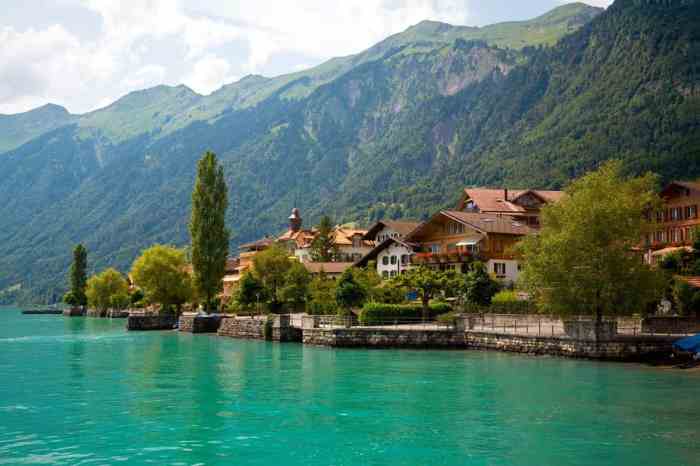
Planning a trip to the Alps can be an exciting adventure, but it’s important to be prepared. The Alps encompass a vast area with diverse landscapes, weather conditions, and cultural nuances. To make the most of your journey, consider these travel tips for a seamless and enjoyable experience.
Transportation
The Alps offer various transportation options, from scenic train journeys to challenging mountain hikes. To navigate the region efficiently, understanding the transportation options is crucial.
- Trains:The Swiss, Austrian, and Italian railway networks are highly efficient and connect major cities and towns within the Alps. For scenic routes, consider the Glacier Express in Switzerland or the Bernina Express in Switzerland and Italy. These trains offer panoramic views of the mountains and valleys.
The Austrian and Italian rail systems also offer excellent connections for reaching popular destinations in the Alps. Consider purchasing a Eurail Pass for unlimited train travel in Europe, which can be a cost-effective option for multi-country itineraries.
- Buses:Buses are a more affordable option for getting around the Alps. They connect smaller towns and villages, providing access to remote areas that might not be easily accessible by train. Check local bus schedules and ticket prices for your desired route.
Online platforms like FlixBus and Eurolines offer affordable and convenient bus services across Europe.
- Cars:Driving through the Alps can be a thrilling experience, offering the flexibility to explore at your own pace. However, be prepared for winding roads, steep inclines, and potential road closures due to weather conditions. It’s recommended to have a reliable car and be comfortable with driving in mountainous terrain.
Consider purchasing a toll sticker for driving on certain highways in Switzerland and Austria.
- Air:Several airports serve the Alps, offering convenient access to major cities and towns. Geneva and Zurich airports in Switzerland, Munich Airport in Germany, and Innsbruck Airport in Austria are popular gateways to the region. Once you arrive at your chosen airport, you can easily connect to other destinations using trains, buses, or rental cars.
Accommodation
The Alps offer a wide range of accommodation options, from luxurious hotels to cozy guesthouses and budget-friendly hostels. To find the perfect accommodation for your needs, consider the following:
- Hotels:Hotels in the Alps range from charming boutique hotels to grand resorts. They offer amenities such as swimming pools, spas, and restaurants. Consider your budget and desired level of luxury when choosing a hotel. Some popular hotel chains in the Alps include Kempinski, Four Seasons, and Hilton.
- Guesthouses:Guesthouses provide a more intimate and local experience. They often feature family-run operations, offering a warm welcome and traditional charm. Guesthouses are typically more affordable than hotels and offer a unique opportunity to interact with locals.
- Hostels:Hostels are a budget-friendly option for solo travelers or groups. They provide shared rooms and common areas for socializing. Hostels are often located in central areas, offering easy access to local attractions and transportation.
- Apartments:For longer stays or groups, renting an apartment can be a comfortable and cost-effective choice. Apartments offer kitchen facilities and living spaces, providing more privacy and flexibility. Websites like Airbnb and Booking.com offer a wide selection of apartments in the Alps.
Budget Considerations
The Alps can be a relatively expensive destination, especially during peak season. To plan a budget-friendly trip, consider these factors:
- Accommodation:Choose budget-friendly options like hostels or guesthouses. Consider traveling during the off-season when prices are lower.
- Transportation:Take advantage of public transportation options like trains and buses. If driving, consider carpooling to split fuel costs.
- Activities:Choose free or low-cost activities like hiking, exploring nature, or visiting museums. Some attractions offer discounts for students or seniors.
- Food:Eat at local restaurants and markets for affordable meals. Pack snacks and drinks to save money on meals.
Essential Items to Pack, Top 10 Places To Visit In The Alps
Packing for a trip to the Alps requires considering the diverse weather conditions and activities you plan to engage in. Here are some essential items to pack:
- Clothing:Pack layers of clothing, as the weather in the Alps can change quickly. Include warm sweaters, jackets, waterproof outerwear, hiking boots, comfortable walking shoes, and quick-drying clothing.
- Gear:Depending on your activities, pack necessary gear such as hiking poles, a backpack, sunscreen, sunglasses, a hat, and a water bottle. If you plan on skiing or snowboarding, bring appropriate equipment or rent it locally.
- Toiletries:Pack essential toiletries like soap, shampoo, toothbrush, and toothpaste. Consider bringing a travel-sized first-aid kit with pain relievers, bandages, and antiseptic wipes.
- Electronics:Pack a camera, phone charger, and any other necessary electronics. Consider bringing a portable power bank for charging devices on the go.
- Documents:Pack your passport, visa (if required), travel insurance documents, and any necessary travel confirmations.
Navigating the Alps
The Alps present unique challenges for travelers, including language barriers, local customs, and safety precautions. Here are some tips for navigating the region:
- Language:While English is widely spoken in tourist areas, learning a few basic phrases in the local language can enhance your interactions with locals. Commonly spoken languages in the Alps include German, French, Italian, and Slovene. Consider using a translation app or phrasebook to communicate effectively.
- Customs:Be respectful of local customs and traditions. In some areas, it’s customary to greet people with a handshake or a “Guten Tag” (German for “Good day”). Learn about the local customs before your trip to avoid any unintentional faux pas.
- Safety:The Alps are generally safe, but it’s important to take precautions, especially when hiking or engaging in outdoor activities. Always inform someone about your itinerary and expected return time. Be aware of weather conditions and potential hazards, and dress appropriately for the terrain.
Carry a map, compass, and emergency supplies.
Conclusion
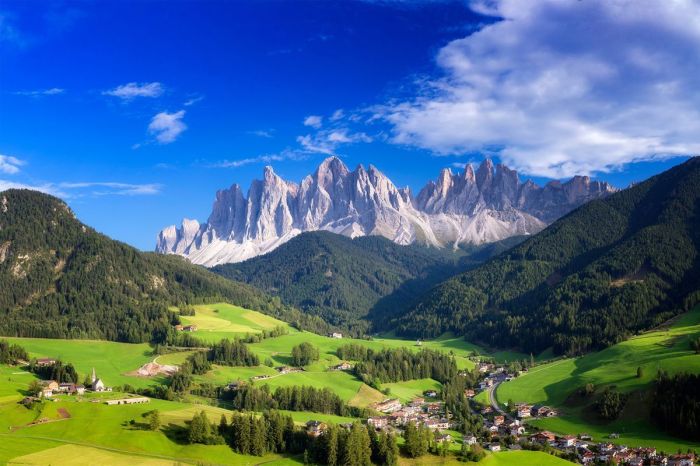
From towering peaks to charming villages, the Alps offer an unparalleled blend of natural beauty, cultural richness, and thrilling adventures. Whether you’re an avid hiker, a passionate skier, or simply seeking a breathtaking escape, the Alps have something for everyone.
Key Highlights of the Alps
The Alps are a diverse region, encompassing various countries and landscapes. Here are some of the key highlights that make the Alps a must-visit destination:
- Stunning Scenery:The Alps are renowned for their dramatic peaks, pristine glaciers, and lush valleys, providing breathtaking views that will leave you in awe.
- Outdoor Adventures:From hiking and skiing to mountain biking and rock climbing, the Alps offer endless opportunities for outdoor enthusiasts to challenge themselves and enjoy the beauty of nature.
- Rich Culture and History:The Alps are home to a rich tapestry of cultures and traditions, with charming villages, historic castles, and vibrant festivals. Explore the region’s unique heritage and immerse yourself in its captivating history.
- World-Class Resorts:The Alps are dotted with world-class ski resorts, offering luxurious accommodations, exceptional dining, and unparalleled skiing experiences.
- Delicious Cuisine:Indulge in the region’s culinary delights, featuring fresh, locally sourced ingredients and traditional recipes. Sample local cheeses, wines, and hearty dishes that reflect the Alps’ rich agricultural heritage.
Final Conclusion
The Alps offer a unique blend of natural beauty, cultural experiences, and exciting adventures that will stay with you long after you leave. Whether you’re seeking a challenging hike, a relaxing ski trip, or a cultural immersion, the Alps have something to offer every traveler.
So, go ahead, explore the diverse landscapes, savor the local flavors, and create memories that will last a lifetime.
Quick FAQs: Top 10 Places To Visit In The Alps
What’s the best time to visit the Alps?
The best time to visit the Alps depends on your interests. Summer is ideal for hiking and exploring, while winter offers excellent skiing and snowboarding conditions. Spring and fall provide a mix of activities and milder weather.
How much does a trip to the Alps cost?
The cost of a trip to the Alps varies depending on your travel style, accommodation choices, and activities. Budgeting for transportation, accommodation, food, and activities is crucial.
Do I need a visa to visit the Alps?
Visa requirements depend on your nationality and the specific country you’re visiting. Check with the relevant embassy or consulate for the most up-to-date information.

